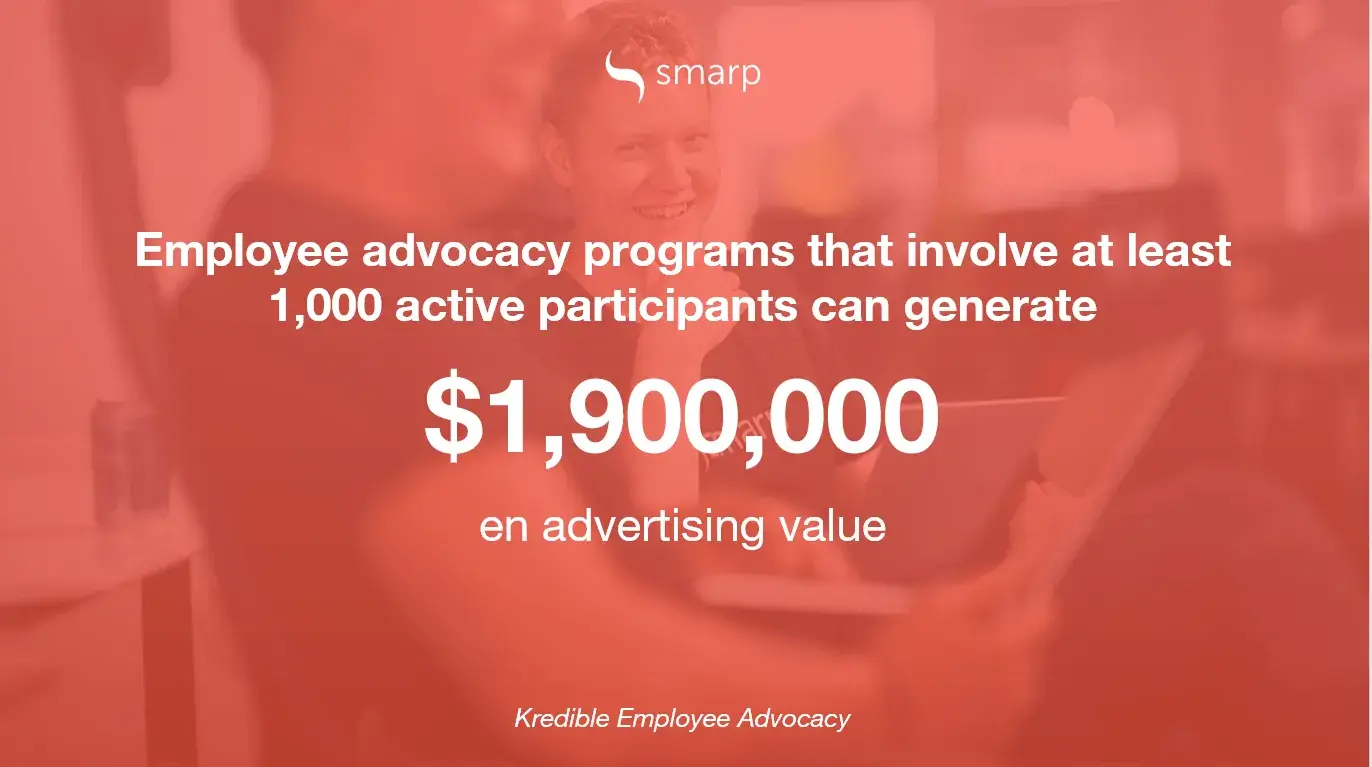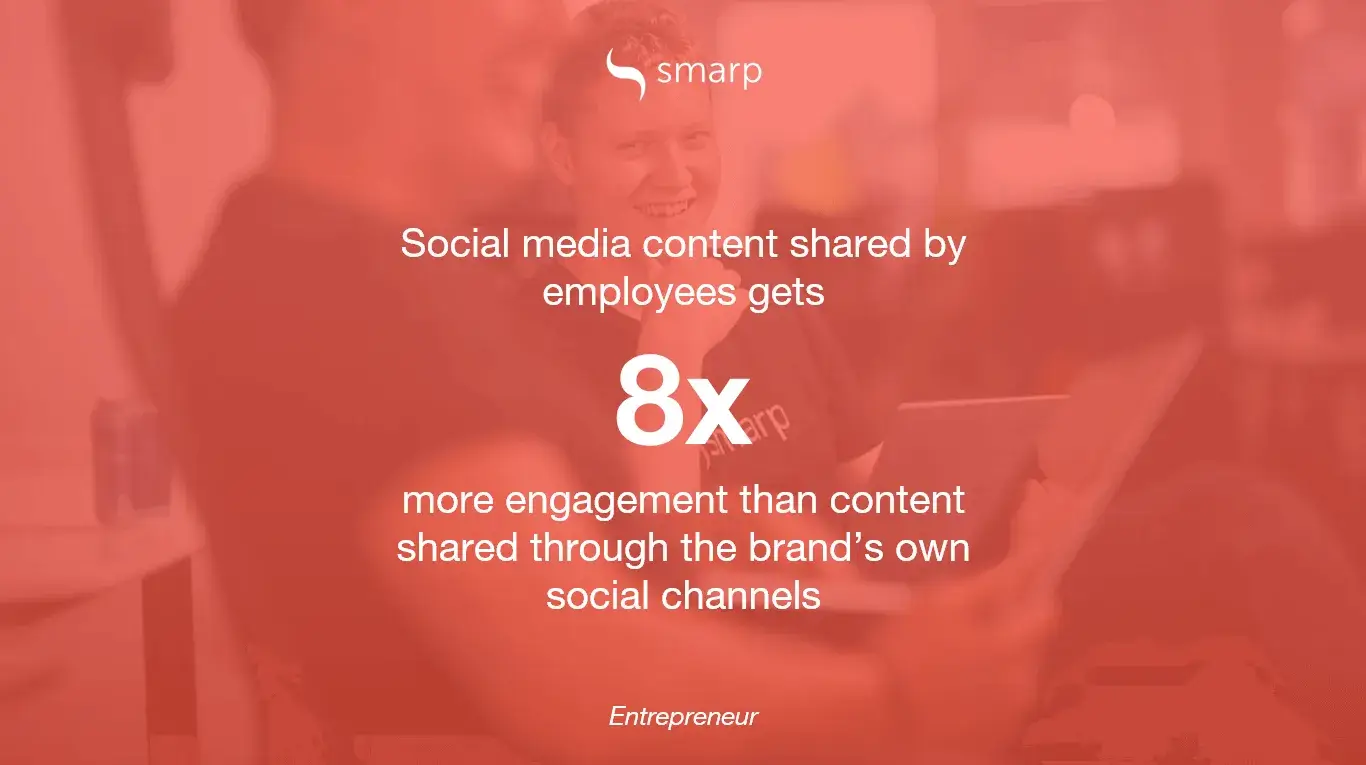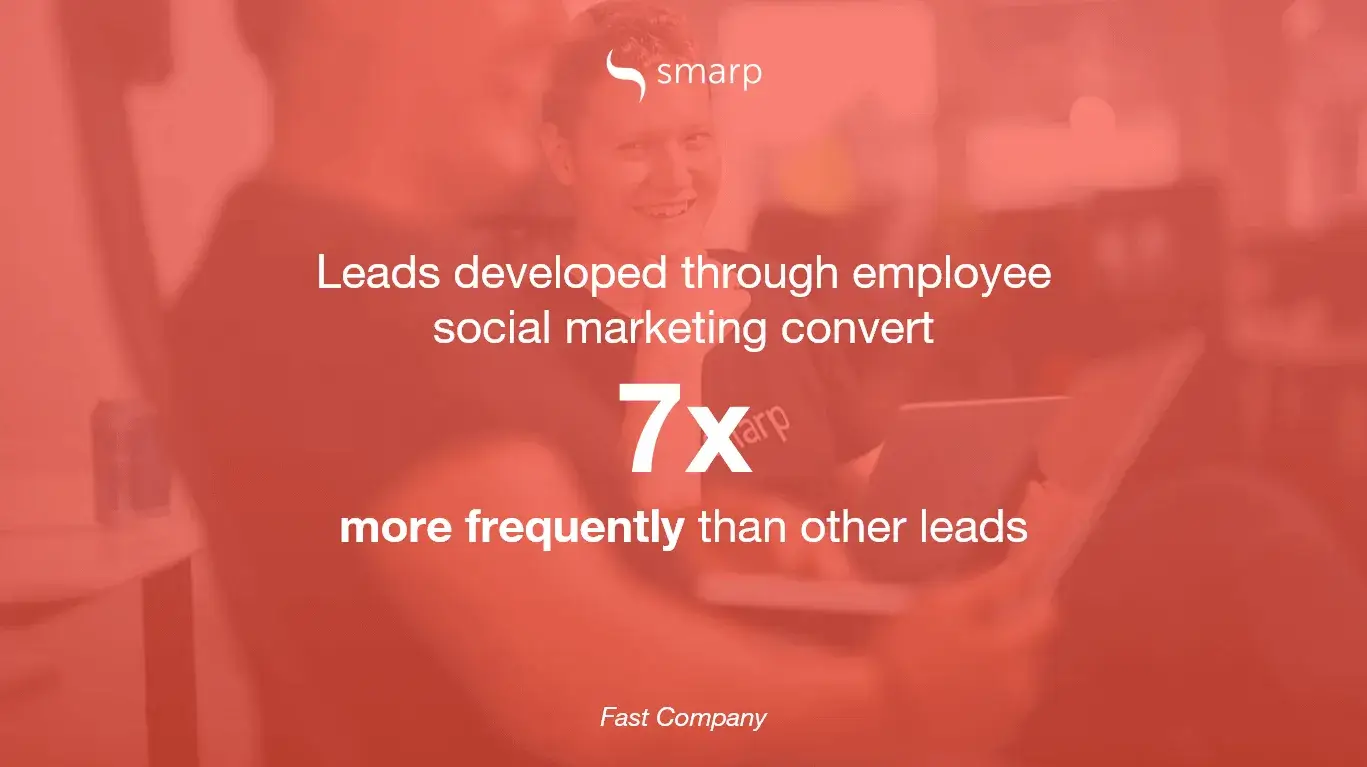Brand ambassador programs can be a powerful way to boost business performance in various departments including sales, marketing, human resources, and others.
Moreover, with the increase in use of digital channels during the current world crisis, many organizations are looking for new ways to better leverage digital channels for words of mouth marketing.
In this blog, we will talk about how to implement a successful brand ambassadors program and why and how your own employees can be your best brand ambassadors. We will also share a few inspiring examples of successful brand ambassadorship programs.
➡️ Before we move forward, try out our new employee advocacy ROI calculator!
What is a Brand Ambassador Program
Brand advocacy programs are programs created to incentivize customers, employees, partners, and other stakeholders for talking positively about your brand on online and offline channels.
Even though there are various types of brand advocacy programs, all of them have similar goals around improving sales, brand awareness, as well as customer loyalty.
Moreover, word of mouth generates more than 2X the sales of paid advertising, according to McKinsey.

To add, people who are referred by brand advocates are also more loyal customers. According to Deloitte, customers referred by other customers have a 37% higher retention rate. This is all due to the fact that 92% of consumers believe recommendations from family and friends far more than direct messaging from a brand.
Therefore, we can conclude that recommendations that come after a personal experience are one of the most trusted sources of information and one of the most efficient sales and marketing channels.
7 Steps to Create a High-Performing Brand Ambassador Program
Creating, implementing, and managing a successful brand ambassador program can be a tall order for organizations, especially large enterprises that manage relationships with various stakeholders.
However, there are certain steps and best practices that every brand ambassador program should follow.
Let’s go over them.
1. Get internal buy-in
Getting internal buy-in from leadership is an important prerequisite for building a good program. Leadership’s support can go a long way in making the program more efficient and driving more engagement from brand ambassadors.
As ambassadorship marketing is one of the most impactful social media marketing trends, getting leadership’s approval shouldn’t be hard to achieve.
To get their buy-in, the best approach to take is to present the benefits of brand advocacy. Here are a few statistics that can help you get started with building a business case:
- Earned media (press, word-of-mouth, peer-to-peer referrals) drives 4x the brand lift as paid media.
- User-generated content has a 28% higher engagement rate compared to standard posts. They are also 2x as likely to be shared.
- Influencer Marketing is the fastest-growing online customer acquisition method
- According to results from the Kredible Employee Advocacy Study, employee advocacy programs that involve at least 1,000 active participants can generate $1,900,000 in advertising value.

- LinkedIn found the employees of a company tend to have 10 times more followers than the company itself. To add, while only about 2% of employees re-share their company’s social posts, they are responsible for 20% of the overall engagement.
2. Define goals and objectives
The next step is to clearly define the goals of your brand ambassadorship program. Defining goals and KPIs can help you stay focused and continuously track the performance of your ambassadorship initiatives.
When defining goals, think of your organization’s bottlenecks and business areas that need improvement. Then think about how brand ambassadorship can be leveraged to achieve better results.
Some of the common examples of goals include:
- Increase brand awareness
- Generate more sales
- Drive conversions
- Expand to new markets and audiences
- Increase engagement on social media
- Foster customer loyalty
- Drive more job applicants
3. Choose the right advocates
After defining your goals, it is important to understand and clearly define what type of brand ambassadors are the best fit for your organization. For example, in some cases, engaging your own employees in the brand ambassador programs may have much more sense than paying for an influencer.

So who can be a brand ambassador?
- Customers: Customers are often considered as best brand advocates and their reference is a powerful way to drive new sales.
- Employees: Employees’ inside knowledge and passion about your product and services can go a long way in making others interested in what your organization has to offer. Moreover, reaching and engaging employees is often much easier than reaching customers, partners, and other stakeholders.
- Business partners: Charities, organizations, and other business affiliates can also influence purchasing decisions.
- Influencers: Influencers are a well-known form of advocates. Even though they make sense for some businesses, they can be deemed as expensive and not as trustworthy as customers and employees.
4. Establish guidelines for brand advocates
Adding structure, policies, and procedures to your brand ambassador program can make it much more efficient and streamlined. Depending on the type of brand ambassador you choose, it is important to establish criteria and guidelines for how they will promote your brand. Here is a great example from ReferralRock:

5. Turn negatives into positives
The level of engagement with your ambassadors can make or break your marketing advocacy programs. This is why you need to listen to what your advocates are already saying about you on online communication channels such as social media.
While listening to the positive things that people are saying about your company is great, it is important not to ignore negative things. Dealing with complaints is never fun, but addressing concerns quickly can transform unhappy clients into incredible brand advocates.
6. Reward your advocates
Rewarding your brand ambassadors is important for driving continuous engagement with your program. With influencers, the most common type of awards are monetary awards. This is why influencer marketing is the most expensive mean of brand advocacy.
On the other hand, employee advocacy programs don’t necessarily have monetary rewards tied to them. Instead, organizations tend to implement employee advocacy software solutions with built-in gamification features that drive employees’ participation rates with the programs.
7. Measure the success of your ambassadorship program
Measuring the success of your brand advocacy programs is important for making better, more informed, and data-driven decisions for improvement.
Putting the ROI on your ambassadorship initiatives can help you make smarter investments in the future. For example, understanding if your employees bring you more new customers compared to influencers is a powerful insight that can help you make the program more efficient and less costly.
Why Employees Should Be a Part of Every Brand Advocacy Program
As mentioned earlier, your own employees often make the best brand ambassadors. Large organizations have experienced significant improvements in sales, marketing, and talent acquisition performance when they engaged their employees to share content on social media channels.
The best way to prove that point is by showing a few powerful statistics:
- According to Fast Company, leads developed through employee social marketing convert 7 times more frequently than other leads.

- According to Entrepreneur, social media content shared by employees gets 8 times more engagement than content shared through the brand’s own social channels and is shared 25 times more frequently.
- According to Edelman Trust Barometer, customers perceive staff as more trustworthy than corporate marketing.
- According to LinkedIn research, companies whose employees share their brand’s social content see a lift in the views that their job postings receive.
- According to Kredible, on average, an employee advocacy program involving 1,000 active participants can generate $1,900,000 in advertising value.
- According to Hinge, 87% of employees recognized that employee advocacy contributed to expanding their professional network, and 76% believed that it helped them keep up with industry trends.
🎧 Also tune in to our podcast to learn about why advocacy should be on every job description!
3 Inspiring Brand Advocacy Program Examples
Organizations across the world have recognized the power of advocacy in driving better business results. From small companies to Fortune 500, organizations are becoming more and more aware of the importance of word of mouth marketing.
This is particularly true now when social media consumption is higher than ever before. Due to the pandemic, many other forms of traditional marketing have died, while advocacy marketing is at its absolute peak.
Let’s now take a look into a few successful examples of brand ambassador programs.
Tesla’s Referral Program
Tesla found a great way to leverage their loyal customers to attract even more new clients. Tesla customers are passionate users of this brand, and the company was well aware of that fact. Moreover, they knew that their own customers would be the best form of marketing for the organization.
Tesla implemented referral packages that gave both the referred person and the existing customer amazing discounts – a $1,000 discount on a new order for both of them.
Additionally, Tesla offered existing customers even more motivation – if they referred 10 people, they got the right to buy a limited Founder Series of the brand’s Model X SUV that wasn’t sold to the public. What’s more, the first person to do that also got the vehicle for free.
Starbuck’s Brand Ambassador Program
When talking about brand ambassadorship and advocacy, Starbucks’ example is used as one of the most efficient and most creative ideas out there.
Their campaign was called Tweet-A-Coffee. The idea was pretty simple – it would allow customers to buy a $5 gift card for their friends through Twitter. Customers just had to Tweet the @tweetacoffee handle alongside the recipient’s own Twitter handle. The first 100,000 people who joined the program also got a $5 gift card themselves.
Besides being a profitable strategy (generating around $180,000 in sales for Starbucks), it also allowed the brand to identify both loyal advocates and potential customers (over 27,000 brand advocates alone participated) they can engage with to boost sales even more down the road.
BDO’s Employee Advocacy Program
Even though BDO in Australia invests in creating great content, not all of its people actively shared this content or industry-related content with their personal networks.
The company wanted to encourage partners and staff to use social media more actively and proactively, especially LinkedIn. The goal was to help them grow their personal brand and strengthen client relationships, all while increasing the organization’s reach and recognition.
In order to achieve that, they needed proper employee advocacy software, so they decided to implement Smarp.
Soon after the implementations, they achieved great results – within nine months, its people have generated 13.94K unique clicks, 13.70K reactions and have reached 3.67M people on social media.
Furthermore, they have also generated positive engagement through their shares. For example, their posts have generated 4.61 clicks per share and 4.54 reactions per share on LinkedIn.
If you are looking to implement an employee advocacy program in your organization and witness the power of advocacy marketing in driving better business results, schedule a Smarp demo today!









